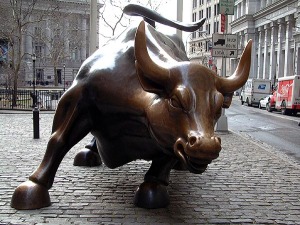“The Flight To Quality” is an investment term for when investors move their capital away from riskier investments to the safest possible investment vehicles. In The New Normal I write about, I believe we are seeing a flight to quality across a broad spectrum of business: media & marketing, retail, entertainment, sports and more. And I believe it takes the form of a a “Flight To Quality…and VALUE“.
Sometimes it is truly about quality and less about price…Take for example the recent case where a package of bed linens bargain-priced for $35.00 at Kmart sold significantly LESS than a quite similar package at Pottery Barn that was priced at $129.00. Was this because upper middle class shoppers at Pottery Barn are spending more freely in the recession than lower middle class shoppers at Kmart? Maybe — but actually I believe it was because the Pottery Barn product was higher quality, longer lasting and therefore ultimate a better value.
Similarly, look at what has happened to the live entertainment industry in 2010. (See WSJ article.) A shockingly large number of high profile, major tour dates were canceled by some of the world’s best selling music artists: The Eagles, Christina Aguilera, The Dixie Chicks and others. The reason? Low ticket sales. The reasons cited were (i) the artists were touring too much (over-saturating their market) and (ii) they weren’t releasing any new music (no new albums). So the public said: “These tickets are expensive, really. I saw this artist last year, and he/she doesn’t have a new record. It’s not worth it.”
“It’s not worth it.” The attitude and outlook of the New Normal is defined by the question: “Is it worth it?”
- In Sports: “Is it worth it to re-up and continue being a season ticket subscriber in the face of my team’s lousy management and escalating ticket prices?” see NY Times piece on personal seat licenses
- In Media and Marketing: “Is it worth it to re-up and spend lavishly on traditional (read: expensive) media buys like radio, TV and print? Or should I shift my focus even more to measurable media online and in the mobile space, where I can calculate my ROI?” WSJ 9/23/2010
The margin for error has gotten smaller. And whether you’re buying sheets, tickets or advertising, these days you are going to buy:
- what works
- what lasts
- what provides the most VALUE
Sometimes it is about lower price, sometimes it’s not. But making sure you get what you want and need has never been more relevant.




